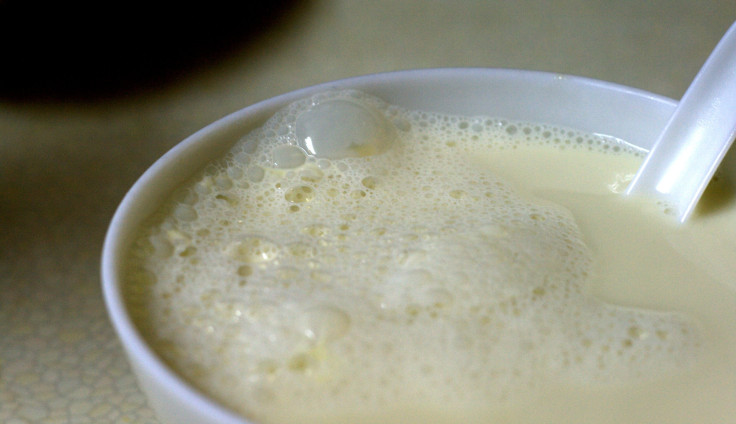Exposure To Bisphenol A May Reduce Women's Chances Of Getting Pregnant, But Eating Soy Can Help

Researchers have known for years that bisphenal A, (BPA), a chemical that's been used to harden plastics for over 40 years, has a chemical composition that mimics estrogen. Because women are at particular risk of exposure, Harvard researchers studied women undergoing fertility treatments and found a link between high levels of BPA exposure and lower conception rates. On the bright side, they also found regular soy consumption may protect women from these effects.
"Our study is the first to show a possible interaction between soy and BPA in humans," said the study’s co-author Dr. Jorge E. Chavarro, a nutrition and epidemiology professor at Harvard Medical School, in a press release . "This is consistent with research in mice that found a soy-rich diet could protect against reproductive health problems associated with BPA exposure. More research is needed to determine why soy has this effect in humans."
For the study, researchers examined 239 women who, because of failed pregnancy attempts, underwent at least one in vitro fertilization (IVF) cycle between 2007 and 2012. They looked into the women’s diets, their IVF success and failure rates, and their levels of BPA exposure — measured in urine samples. It turned out those who didn’t eat soy foods had higher levels of BPA exposure, as well as lower rates of successful embryo implantations, (an early stage of pregnancy), confirmed pregnancies, pregnancies that progressed to the second trimester, and live births. When it came to the 176 women who said they routinely ate soy, the researchers found both lower levels of BPA and a higher chance of successful IVF outcomes.
"Although it is recommended that women trying to get pregnant reduce their exposure to BPA, our findings suggest that diet may modify some of the risks of exposure to BPA, a chemical that is nearly impossible to completely avoid due to its widespread use," said the study’s senior author Dr. Russ Hauser, reproductive physiology professor at Harvard T.H. Chan School of Public Health, in a press release .
Traces of BPA have been found in more than 96 percent of Americans’ bodies, and a major reason is that it’s found in the plastic lining of canned foods, Tupperwear containers, water bottles, and even baby bottles. It can leach out of any of these plastics into food or drinks. What’s more, heating plastic containers with the chemical increases the amount of it that transfers into food.
The Food and Drug Administration once assured the public that BPA was safe to consume. In 2010, however, the agency changed its position after toxicity tests resulted in “some concern” over its safety. Specifically, the agency found cause for concern with the effects of BPA on the brain, behavior, and prostate glands in fetuses, infants, and young children.
A 2012 study published in the journal PLOS One was the first to reveal a diet rich in soy may reduce some of the negative effects BPA has on humans . Researchers found exposure to BPA in young rats affected growth; it caused genetic changes in key areas of the brain, and altered the onset of puberty. Soy contains phytoestrogens that can affect the endocrine system, and help to regulate hormones. However, researchers aren’t sure whether these phytoestrogens mitigate the effects of BPA or if a different physiological effect is at play.
"Additional research could help identify other diet and lifestyle changes that may modify the effects of not only BPA exposure, but also exposure to other chemicals," Chavarro said. "In order to fully appreciate risks to human health, we need to design studies that adequately assess both diet and environmental chemical exposures.”
Source: Hauser R, Chavarro JE, and Minguez-Alarcon L, et al. Soy Intake Modifies the Relation Between Urinary Bisphenol A Concentrations and Pregnancy Outcomes Among Women Undergoing Assisted Reproduction . Journal of Clinical Endocrinology & Metabolism . 2016.
Published by Medicaldaily.com



























